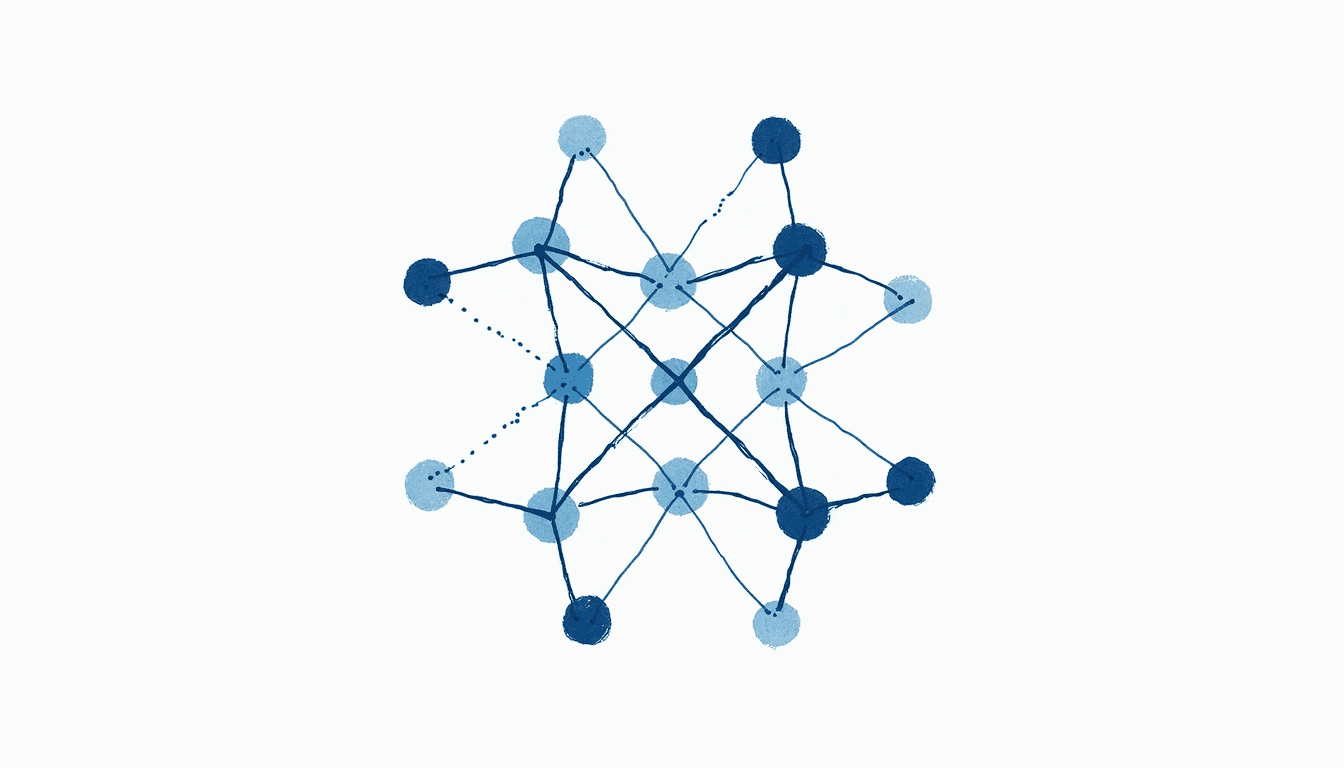Updated Jan 19, 2025
The Basics of Lattice-Based Cryptography
Lattice-based cryptography is an intriguing area within the larger field of cryptography. It harnesses the complex structures known as lattices to create secure communication systems. But what exactly does this mean for us? Let’s break it down into digestible pieces.

Defining Lattice-Based Cryptography
At its core, lattice-based cryptography utilizes mathematical structures called lattices, grids extending infinitely in multiple dimensions. Think of them as a multidimensional chessboard, where each square holds valuable information. This domain of cryptography has the potential to provide security against both classical and quantum attacks.
This is no small feat. The rapid strides in quantum computing threaten traditional encryption methods. Lattice-based systems stand tall amidst these challenges, promising robust security that others may lack. Their resilience stems from their reliance on the hardness of specific mathematical problems, such as the Shortest Vector Problem (SVP) and the Learning With Errors (LWE) problem, which remain difficult to solve even with the advent of quantum computing technologies.
Key Principles and Concepts
To grasp how lattice-based systems work, it’s essential to understand a few key concepts. First, there’s the idea of “hard mathematical problems.” These are problems that even the fastest computers struggle to solve. Lattice-based cryptography leans on the foundation of these hard problems, ensuring secure keys and encrypted messages.
The security of lattice systems relies on real-world applications such as digital signatures, encryption, and homomorphic encryption. Homomorphic encryption, for instance, allows computations on ciphertexts, which can yield an encrypted result that, when decrypted, matches the result of operations performed on the plaintext. How’s that for magic?
In addition to these applications, lattice-based cryptography also plays a crucial role in secure multiparty computation, where multiple parties can jointly compute a function over their inputs while keeping those inputs private. This capability is particularly valuable in scenarios like collaborative data analysis, where sensitive information must be protected while allowing meaningful insights to be drawn from the data. The versatility of lattice-based systems makes them a promising candidate for the future of secure communications, especially as we navigate an increasingly interconnected digital landscape.
The development of lattice-based cryptographic protocols is an active area of research, with ongoing efforts to optimize their efficiency and usability. Researchers are exploring various lattice constructions and parameter selections to balance security with performance, ensuring these systems can be implemented in practical applications without compromising speed or user experience. As we continue to innovate in this space, the potential for lattice-based cryptography to revolutionize data security grows more tangible.
The Role of Lattice-Based Cryptography in Secure Communication
The Importance of Secure Communication
In our online sphere, secure communication is not just a nice-to-have; it’s an absolute necessity. With hackers lurking in the shadows, data breaches have become alarmingly commonplace. Every email, transaction, and chat carries potential risks. Here, lattice-based cryptography steps in like a knight in shining armor.
The modern internet demands robust security protocols. Governments, corporations, and individuals are all struggling to protect sensitive data. Lattice-based cryptography offers a reliable solution, reinforcing the gates of digital communication. As we increasingly rely on digital platforms for everything from banking to personal communication, the stakes have never been higher. The implications of a security breach can be devastating, leading to financial loss, identity theft, and a breach of privacy that can take years to resolve.
How Lattice-Based Cryptography Enhances Security
Utilizing the underpinning of lattice structures, this cryptography forms a barrier against unauthorized access. The hard problems it relies on are challenging enough to stymie even the most sophisticated hackers. Moreover, its mathematical resilience fosters trust among users and service providers.
This innovative approach offers more than just protection; it instills confidence. Security assurance in digital communication is akin to having a sturdy lock on your front door. You certainly sleep better at night, knowing it can withstand a blow. Moreover, as quantum computing looms on the horizon, the need for cryptographic methods that can resist quantum attacks becomes increasingly urgent. Lattice-based cryptography is particularly promising in this regard, as it is believed to resist the types of algorithms that quantum computers would employ to break traditional cryptographic systems. This positions lattice-based methods as a solution for today’s security challenges and a forward-thinking approach to future-proofing our digital communications.
The Advantages of Lattice-Based Cryptography
Every hero has its strengths. Lattice-based cryptography boasts several significant advantages that elevate it above conventional methods.

Resistance to Quantum Computing Attacks
The headline feature of lattice-based cryptography is its formidable defense against quantum attacks. Traditional methods, like RSA and ECC, are built on principles that could crumble under the might of quantum computers. Lattice structures, however, remain robust against such threats.
The race against quantum computing is real. As researchers tirelessly work to develop quantum capabilities, the cryptography community must stay ahead of the curve. Lattice-based systems lead that charge, providing a sustainable path to continued security.
The implications of quantum resistance extend beyond mere security and foster trust in digital communications. As organizations increasingly rely on digital infrastructures, ensuring their data remains secure against future quantum threats is paramount. This trust can enhance user confidence and promote wider adoption of lattice-based cryptography technologies, ultimately shaping the future of secure communications.
Flexibility and Versatility
Beyond just resilience, lattice-based cryptography shines with its flexibility. Its adaptability allows for various applications, from secure messaging to cloud computing. This versatility is akin to a toolbox filled with various tools, each for a specific task, making it suitable for myriad scenarios.
Additionally, advancements in this field continue to emerge, unveiling new implementation methods. Clearly, the future of cryptography isn’t just bright; it’s dazzling.
One fascinating area of exploration is the integration of lattice-based cryptography into blockchain technology. As the demand for secure and scalable blockchain solutions grows, the unique properties of lattice structures can enhance the security and efficiency of decentralized systems. This intersection of technologies highlights the adaptability of lattice-based cryptography and opens new avenues for innovation in secure digital transactions and smart contracts.
The Challenges and Limitations of Lattice-Based Cryptography
Despite its numerous advantages, lattice-based cryptography is not without its hurdles. As with any technology, it faces challenges that need careful navigation.
Computational Complexity
One major roadblock is computational complexity. While the hard problems underpinning lattice-based cryptography offer high security, they can also result in slower processing times. Operational efficiency may take a backseat to security in some instances. After all, we crave the balance of speed and safety.
Developing methods that streamline these processes is critical. Designers must work diligently to create algorithms that don’t compromise security while improving efficiency. There’s a lot at stake here!
The intricate nature of lattice structures can lead to challenges in optimization. As researchers delve deeper into the mathematical foundations, they often encounter trade-offs that necessitate carefully examining resource allocation. This means enhancing one performance aspect, such as speed, might inadvertently weaken another, like resilience against specific attack vectors. Thus, the quest for an ideal lattice-based solution is akin to walking a tightrope, where every adjustment requires a meticulous assessment of its broader implications.
Implementation Challenges
Implementing lattice-based systems also presents a unique set of challenges. Transitioning from established, widely used cryptographic methods to newer, lattice-based approaches can be cumbersome for organizations. It often entails retraining personnel, updating systems, and testing methodologies.
However, change is seldom easy. Nevertheless, embracing such advancements can pay dividends in the long run. Security today can save headaches tomorrow.
Additionally, the lack of standardized protocols for lattice-based cryptography can complicate the implementation process. Organizations may find themselves navigating a landscape dotted with varying frameworks and guidelines, which can lead to inconsistencies in deployment. This fragmentation can hinder collaboration between different systems and increase the risk of vulnerabilities. As the cryptographic community works towards establishing more unified standards, it becomes crucial for organizations to stay informed and agile, ensuring that their systems remain robust against evolving threats while adapting to the latest advancements in lattice-based technology.
The Future of Lattice-Based Cryptography
So, what does the future hold for lattice-based cryptography? With the rapid evolution of technology, this area is bound to flourish.
Potential Developments and Innovations
Innovations are on the horizon. Developments in algorithmic efficiency will emerge, making lattice-based systems more user-friendly. As research continues, we may witness groundbreaking applications in the healthcare, finance, and public safety sectors.
The focus will also pivot towards standardization. Establishing universally accepted protocols will bolster user trust and streamline implementation across various platforms.
The Role of Lattice-Based Cryptography in Future Technologies
Looking ahead, the role of lattice-based cryptography in future technologies cannot be overstated. From powering secure connections in 5G networks to protecting data in the burgeoning Internet of Things, its utility spans many applications.
Ultimately, as we embrace advancements in AI, machine learning, and more, lattice-based cryptography will guard the gate, ensuring the dialogues remain safe, secure, and sound.
Conclusion
In conclusion, while we boldly march toward a digital frontier filled with exciting possibilities, lattice-based cryptography will surely be a staple in the quest for secure communication. Where there’s uncertainty, there’s an opportunity for lattice-based systems to weave the fabric of future security.
As we venture into the future of secure communication, it’s clear that lattice-based cryptography will play a pivotal role in safeguarding our digital interactions. For those in the healthcare industry, particularly medical device manufacturers, the importance of cybersecurity cannot be overstated. Blue Goat Cyber, under the expert guidance of Christian Espinosa, specializes in navigating the complex landscape of FDA premarket and postmarket compliance. Our tailored healthcare security services, expert team, and proven regulatory support ensure that your medical devices meet and exceed regulatory standards, maintaining cybersecurity resilience throughout their lifecycle. Don’t leave the security of your medical devices to chance. Contact us today for cybersecurity help and partner with a leader in medical device cybersecurity to protect your technology and enhance patient safety.
